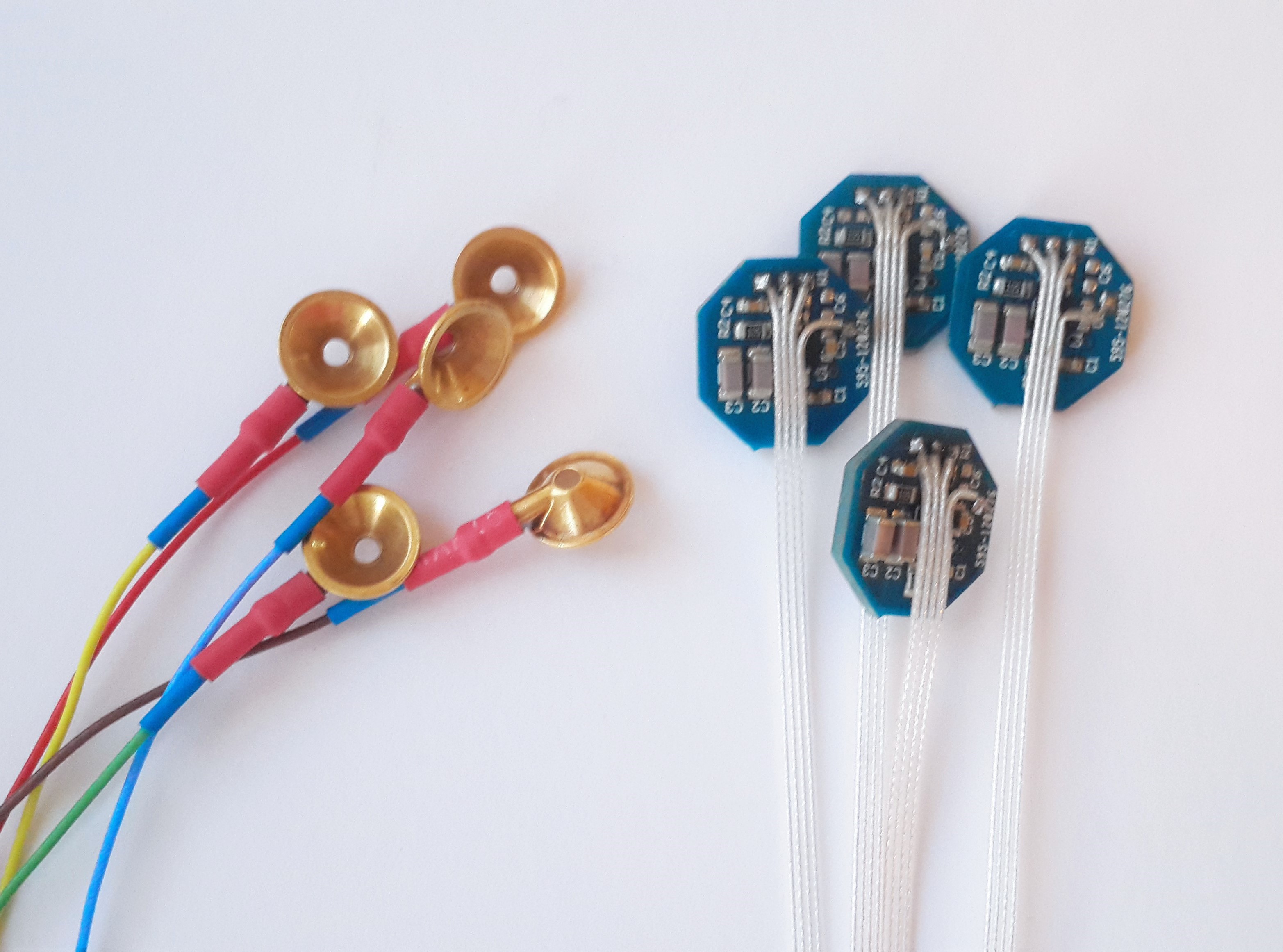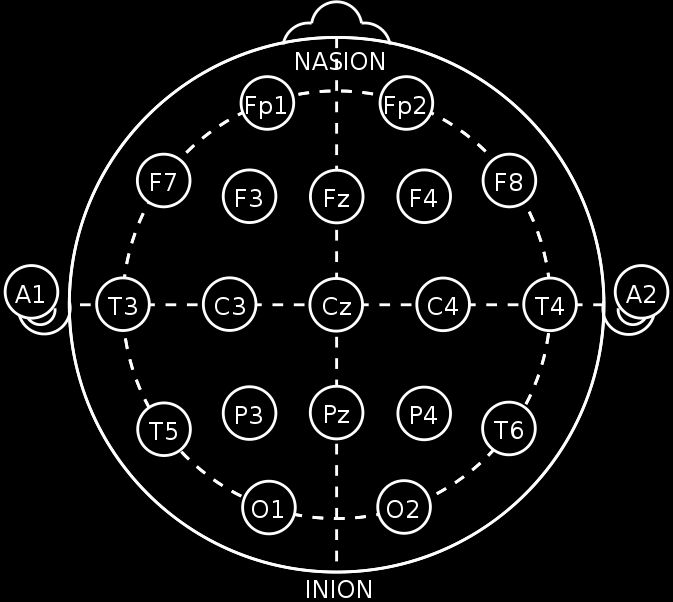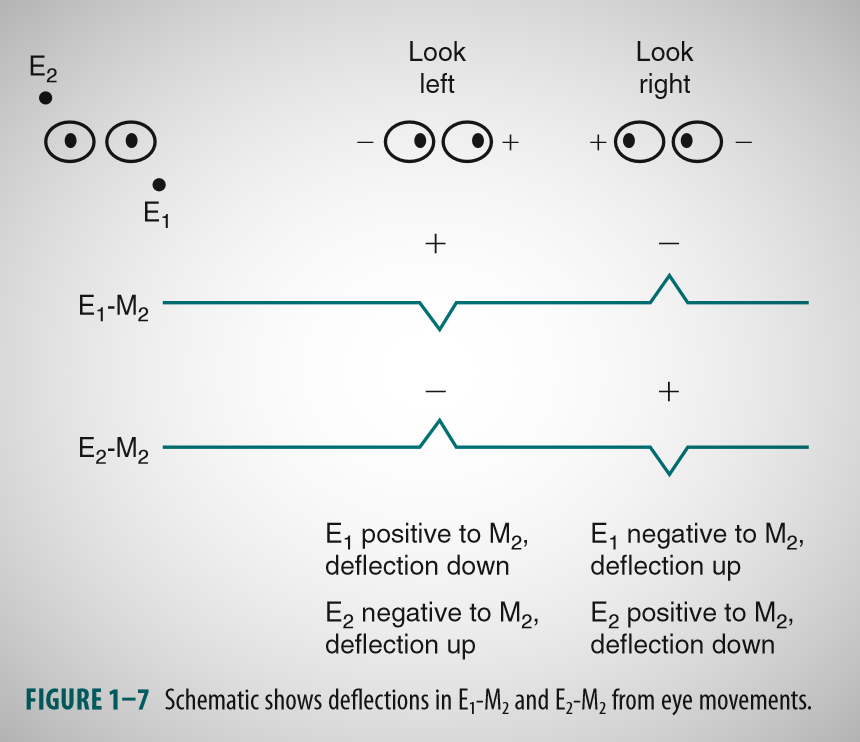OpenLD Passive and Active Electrodes
I've realized that I forgot to mention the type of electrodes I am using for the OpenLD hardware. Below is a picture of passive gold cup electrodes on the left and active electrodes on the right:

The main differences between these two type of electrodes is that the passive electrodes require skin preparation while the active electrodes do not.
The gold cup electrodes above need to be filled with a conductive electrode gel (I use a Ten20 paste) in order to reduce the electrode impedance. However, the active electrodes contain an on-board high-impedance amplifier (in a voltage follower configuration) and corresponding circuitry that takes care of the high impedance nature of the EEG signals.
As of right now, the active electrodes are working and provide excellent quality EEG/EOG signals. I will talk about the board layout and the schematics in a future Project Log. Although I am currently using passive electrodes, I will eventually transition to using the active electrodes in the near future. Stay tuned!
Electrode Placement for the OpenLD
Here is a simple 10-20 diagram that shows the EEG electrode location sites. This figure was adapted from Wikipedia:

In order to detect REM sleep, the signals from the prefrontal cortex of the brain has to be measured. (Imtiaz et al.) Therefore, the positive (non-inverting) EEG electrode is placed on the location Fp1 above, which is on the left side of the forehead. Since differential amplifiers are being used, the negative (inverting) electrode is placed on the site A2, which is behind the right ear, as a reference. This EEG electrode setup is labeled as Fp1-A2.
Furthermore, EOG electrodes need to be placed in order to detect eye movements. Therefore, an E1 non-inverting electrode is placed 1 cm directly below the leftmost corner of the left eye. Also, an E2 electrode is placed 1 cm above the rightmost corner of the right eye. These electrodes, like the EEG Fp1 electrode, are referenced to A2 as well. They are labeled as E1-A2 and E2-A2.

The above diagram shows the placement of E1 / E2 electrodes and how eye movements translate into electrical signals in the EOG trace. This will be important later when we are examining the REM EOG signals. (Diagram adapted from Kerkhof, G. A., & Van Dongen, H. Human Sleep and Cognition: Basic Research)
We can now perform a sample recording. I will post an EEG/EOG/ECG recording in the next Project Log.
Sources:
Imtiaz, S. A., & Rodriguez-Villegas, E. (2014). A low computational cost algorithm for rem sleep detection using single channel EEG. Annals of biomedical engineering, 42(11), 2344-2359.
Kerkhof, G. A., & Van Dongen, H. (2010). Human Sleep and Cognition: Basic Research (Vol. 185). Elsevier.
Discussions
Become a Hackaday.io Member
Create an account to leave a comment. Already have an account? Log In.
Great project. Next step is to extend it with 32 channel EEG. I am looking for a front end for this device, which is also arm based:
https://www.aliexpress.com/item/1005002553363982.html?spm=a2g0o.cart.0.0.25b53c00S6miTT&mp=1
these researchers managed to connect it to OpenBCI GIU:
https://aip.scitation.org/doi/pdf/10.1063/1.4991253
I am interested in connecting it to InfluxDB, Grafana and Python.
Are you sure? yes | no
Great job and very interesting.
A very good reference (Imtiaz, S. A., & Rodriguez-Villegas)
I work with active electrodes and would like to know your solution to compare.
I've worked hard on designing an EEG equipment. If you are interested I would like to exchange views, ideas and developments. I'm a big interested in lucid dreams
Congratulations
Are you sure? yes | no
Thanks! In a future Project Log, I will post more details about the Active Electrodes (schematics, board layout, signal quality, etc.), as they are so much easier to use than gel electrodes. I hate prepping my skin and applying gel every time I have to start a recording... Also, your help & feedback would be great. Again thanks!
Are you sure? yes | no